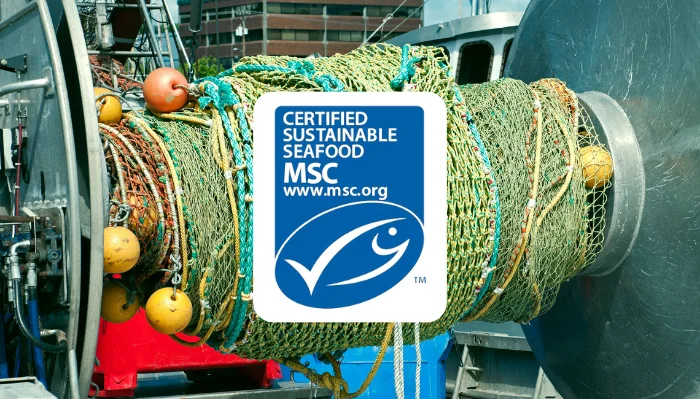In the quest for sustainable seafood, the Marine Stewardship Council (MSC) originally emerged as a beacon for consumers seeking environmentally friendly choices. However, a recent report by the BLOOM Association raises critical questions about the sustainability of MSC-certified tuna, particularly those caught using fish aggregating devices (FADs). This report uncovers a tangled net of ecological concerns, commercial interests, and the struggle to balance them.
Understanding the Role of FADs in Tuna Fishing
FADs are human-made structures floating in the oceans that attract fish, making them relatively easy targets for fishermen. While these devices have significantly increased the efficiency of tuna fisheries, they’ve also sparked debates over their ecological footprint. Concerns include high rates of bycatch, the capture of juvenile tuna, and environmental pollution due to abandoned FADs.
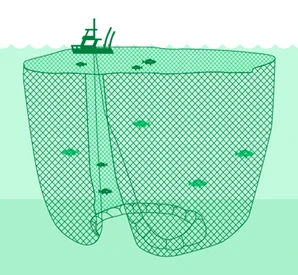
9 Most Commonly Caught Bycatch When Using FADs
- Sea Turtles: Various species of sea turtles, which often get entangled in the nets used with FADs.
- Sharks: Including vulnerable species like silky sharks (Carcharhinus falciformis), which are attracted to the congregating fish around FADs.
- Billfishes: Such as marlins and sailfish, which are often caught due to their proximity to tuna schools.
- Juvenile Tuna: Smaller, younger tuna from species like yellowfin (Thunnus albacares) and bigeye tuna (T. obesus), which haven’t reached reproductive maturity.
- Dolphins and Whales: Occasionally, these marine mammals get entangled or caught in the nets associated with FADs.
- Manta Rays and Mobula Rays: These species can become bycatch due to their feeding and swimming patterns, which often bring them close to FADs.
- Small Pelagic Fish: Such as mackerel and others that are attracted to the FADs but aren’t the targeted species.
- Squid and Octopus: These cephalopods are sometimes attracted to the same areas as the fish aggregating around the FADs.
- Seabirds: Certain seabirds, attracted by the concentration of fish, can become entangled in the equipment used with FADs.
That’s quite a list! Needless to say, that list above is the main reason many environmental groups strongly oppose FADs. Not only do they threaten the populations of these non-target species but also disrupts the broader marine ecosystem. From a strict fishing perspective, the incidental catch, and death, of juvenile tuna and other vulnerable species is particularly concerning for the sustainability of fish stocks and overall ocean health.
MSC Certification and FADs: A Shift in Standards?
The MSC, the largest ecolabeling scheme for wild fisheries, has certified numerous tuna fisheries using FADs. According to BLOOM’s report, more than half of all MSC-certified tuna is now caught using this method. Frédéric Le Manach, BLOOM’s scientific director, contends that this trend signifies a dilution of MSC standards, influenced by market demands for tuna.
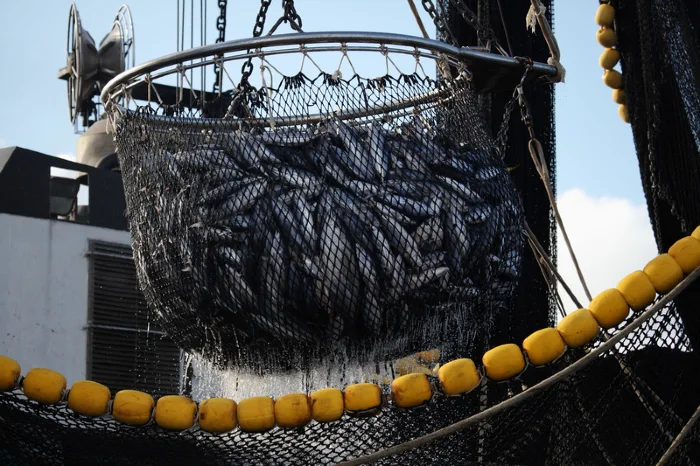
In 2018, Pesqueras Echebastar, a Spanish tuna fishing company, became the first purse seine fishery using FADs to receive MSC certification. Since then, there’s been a surge in the number of MSC-certified tuna fisheries employing FADs. Le Manach argues, “It’s just the MSC standards and the way they are applied by certifiers that have gotten even weaker.”
To illustrate Le Manach’s argument, he pointed to the fact that the MSC-certified fishery Echebaster has committed to using non-entangling and biodegradable FADs which it announced a few years prior to much environmental publicity. Currently, the company has yet to adopt those measures.
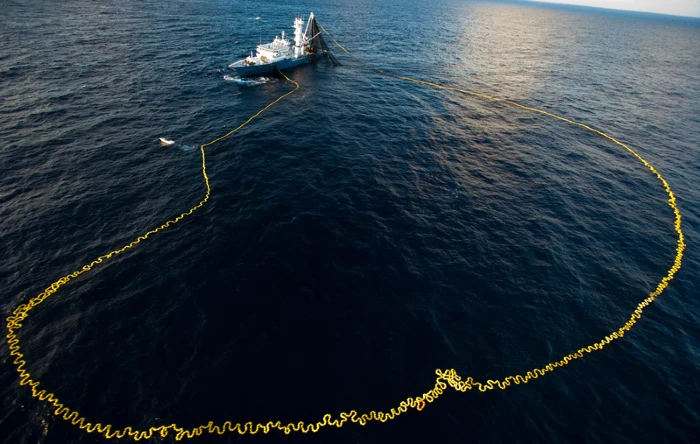
MSC’s Defense and the Debate Over Sustainability
Susannah Henty, MSC’s senior PR manager, disputes the report’s findings, emphasizing the rigorous criteria required for MSC certification. She argues that fisheries must demonstrate sustainable fish stocks, low ecosystem impacts, and effective management to gain certification. Henty also highlights recent advancements in reducing the environmental impacts of FADs, including improved tracking, the use of biodegradable materials, and non-entangling designs.
Despite these advancements, concerns remain about FADs’ ecological impact. The indiscriminate nature of FADs results in higher bycatch rates of non-target species and the capture of juvenile tuna, posing threats to their populations. Additionally, the large number of drifting FADs contributes to marine pollution and habitat destruction.
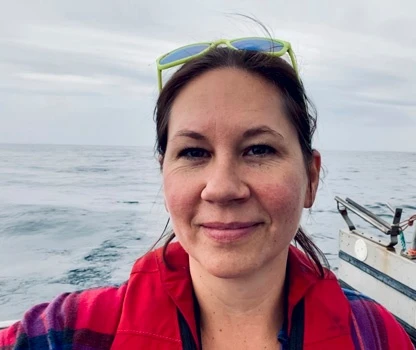
Is It The Fox Guarding The Hen House?
The BLOOM report points to the financial incentives behind MSC certification, with royalties from the ecolabel driving the scheme’s expansion. Le Manach notes, “Retailers are the ones contributing the overwhelming part of the MSC’s budget, but they want big volumes of cheap fish. So, only industrial fisheries work for them.” This dynamic raises questions about the balance between commercial interests and genuine sustainability.
Megan Bailey, a fisheries and seafood supply chain researcher at Dalhousie University in Nova Scotia, Canada, expresses skepticism about FADs meeting sustainability standards. She notes that while there have been investments in improving FAD designs, the core issues of juvenile overfishing and ecological impacts persist.
“My perspective would be that the more we understand about FADs, in fact, the lower they would perform against a sustainability standard,” Megan Bailey stated. “And while it is true that the purse seine industry has invested a significant amount of funding to improve FAD designs, the two issues revolving around FAD fisheries have not changed, juvenile overfishing and ecological impacts.”
Two conservation groups voiced serious concerns to some of the certifying body’s favorable findings and scores. They pointed out that several impacts from the use of FADs, such as how the gear affects species like silky sharks and the overall extent of lost and abandoned FADs that are left in the ocean, haven’t been adequately studied. Oddly enough, the largest financial partners of MSC, being the retailers themselves, have been hesitant to provide the required funding for such a study.
More To Discover
- Siemens Energy’s Wind Turbine Woes Reflect Challenges in Germany’s Energy Shift
- Transforming Palm Trees into Eco-Friendly Building Materials: A Green Innovation to Tackle Construction Emissions
- Swedish Technique Produces Hydrogen Energy That’s Safe, Efficient, and Metal-Free
- From High Hopes to Bankruptcy: The Rise and Fall of Braddock’s Vertical Farming Pioneer, Fifth Season (Our Analysis Included)
Key Points You Should Know From The BLOOM Report
- FAD Usage in MSC-Certified Fisheries: More than half of all tuna certified as sustainable by the Marine Stewardship Council (MSC) is caught using fish aggregating devices (FADs).
- Rising Concerns Over FADs: FADs have raised significant ecological concerns due to high rates of bycatch, the capture of juvenile tuna, and ocean pollution.
- Controversial MSC Certification: The first purse seine fishery using FADs to be MSC-certified was Pesqueras Echebastar in 2018. Since then, the number of MSC-certified tuna fisheries using FADs has increased substantially.
- Criticisms of MSC Standards: The BLOOM Association’s report alleges that the MSC standards and their application have weakened, leading to the certification of fisheries that primarily use FADs.
- MSC’s Defense: The MSC refutes the claims made by BLOOM, asserting that fisheries obtain MSC certification by meeting strict environmental impact criteria.
- Environmental Impact of FADs: FADs contribute to the capture of more juvenile yellowfin and bigeye tuna, potentially threatening their populations. They also result in higher bycatch of non-target species and contribute to marine pollution when lost or discarded.
- Debate Over FADs’ Sustainability: There’s an ongoing debate about whether fishing on FADs can be considered sustainable, with experts expressing skepticism about their impact on juvenile fish and the wider ecosystem.
- Future of MSC-Certified Tuna: The report suggests that consumers buying MSC-certified tuna are more likely to purchase FAD-caught tuna, raising questions about the sustainability of their seafood choices.
The controversy surrounding MSC-certified tuna caught with FADs highlights the complexities of defining and achieving sustainable seafood. It underscores the need for transparency, rigorous standards, and consumer awareness in navigating the murky waters of seafood sustainability.
As the debate continues, it becomes increasingly vital for consumers, industry players, and conservationists to engage in informed discussions about the future of our oceans and the seafood we consume.







